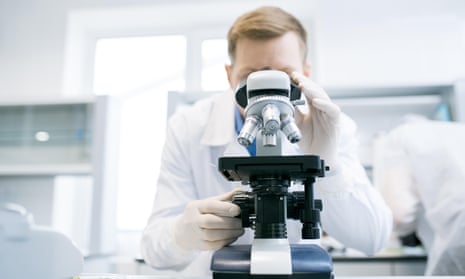Doctors have discovered an aggressive flesh-eating infection that spreads around the body when two strains of microbe combine to overcome the host’s defences.
The infection was found in a patient who required a quadruple amputation after they developed necrotising fasciitis, a rare bacterial condition that is lethal in nearly a third of cases, even when treatment is on hand.
“It’s an uncontrolled microbial infection with massive destruction of tissue,” said Rita Colwell, a microbiologist at the University of Maryland who worked on the latest case. Medical reports on necrotising fasciitis note that the infection can spread at speeds of up to 5cm per hour. It affects about one in 100,000 people in eastern Europe and one in 250,000 in the US.
The most common cause of necrotising fasciitis is a bacteria called Streptococcus pyogenes, though others microbes can be responsible. It tends to arise when the bacteria, which live in the gut and throat, infect wounds and spread deep inside tissues. Once established, the bugs destroy skin, muscle and organs, if they reach them via the bloodstream.
Initial tests on the patient, whose identity was not released, found that their infection was driven by an organism called Aeromonas hydrophila. Though not particularly severe at first, the infection spread to the patient’s liver and spleen and swiftly became life-threatening.
Baffled by the severity of the illness, doctors analysed the entire genetic makeup of the bugs they had taken from the patient. The results showed that the infection consisted of two distinct strains of Aeromonas bacteria that the team labelled NF1 and NF2.
Further genetic work and tests on mice revealed that neither strain of Aeromonas was especially dangerous on its own. Individually, each produced only localised infections. They did not spread to the bloodstream or organs and were swiftly wiped out by the host’s immune system.
When both strains were present in the same infection, however, the combination was potentially lethal. Tests showed that toxins released by NF2 destroyed muscle tissue and allowed the second strain, NF1, to enter the bloodstream and spread quickly to the organs. The patient only survived because surgeons removed both legs beneath the knee and both arms beneath the elbow.
“The simple diagnostic was that it was an Aeromonas hydrophila infection, but in fact it was far more complicated than that,” Colwell said. “This is a clear demonstration of a polymicrobial infection and it was highly subtle in that it was two strains of the same species. One of the strains produces an enzyme that breaks down tissue that essentially allows the other to migrate into the system and infect the liver and spleen.”
Colwell said the work, published in Proceedings of the National Academy of Sciences, highlighted the importance of knowing when infections were driven by different kinds of microbes working in concert.
Many secondary infections might be caused by antibiotics wiping out some strains of bacteria, leaving others to take their place and spread unaffected, she said. “The physician treating the patient must understand what’s happening. We are in an age now where we must understand polymicrobial infections.”
Ashok Chopra, a microbiologist at the University of Texas Medical Branch in Galveston, said the research showed how multiple strains of microbes could dramatically change the course of an infection. In such cases, he said, patients would need combinations of therapies.
“It is of paramount importance that proper tools are available to differentiate different strains of the bacteria as we used in our studies,” he said.
